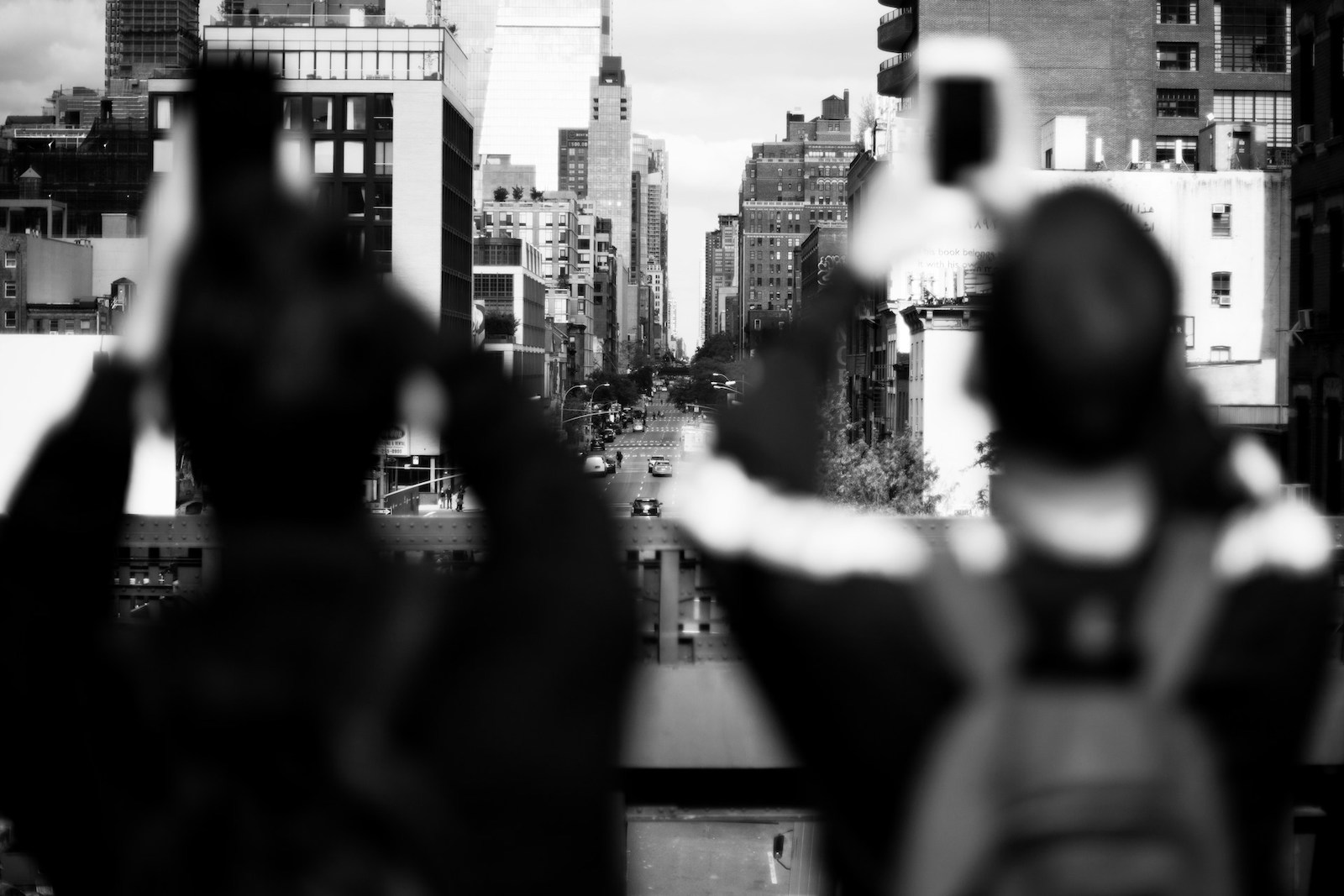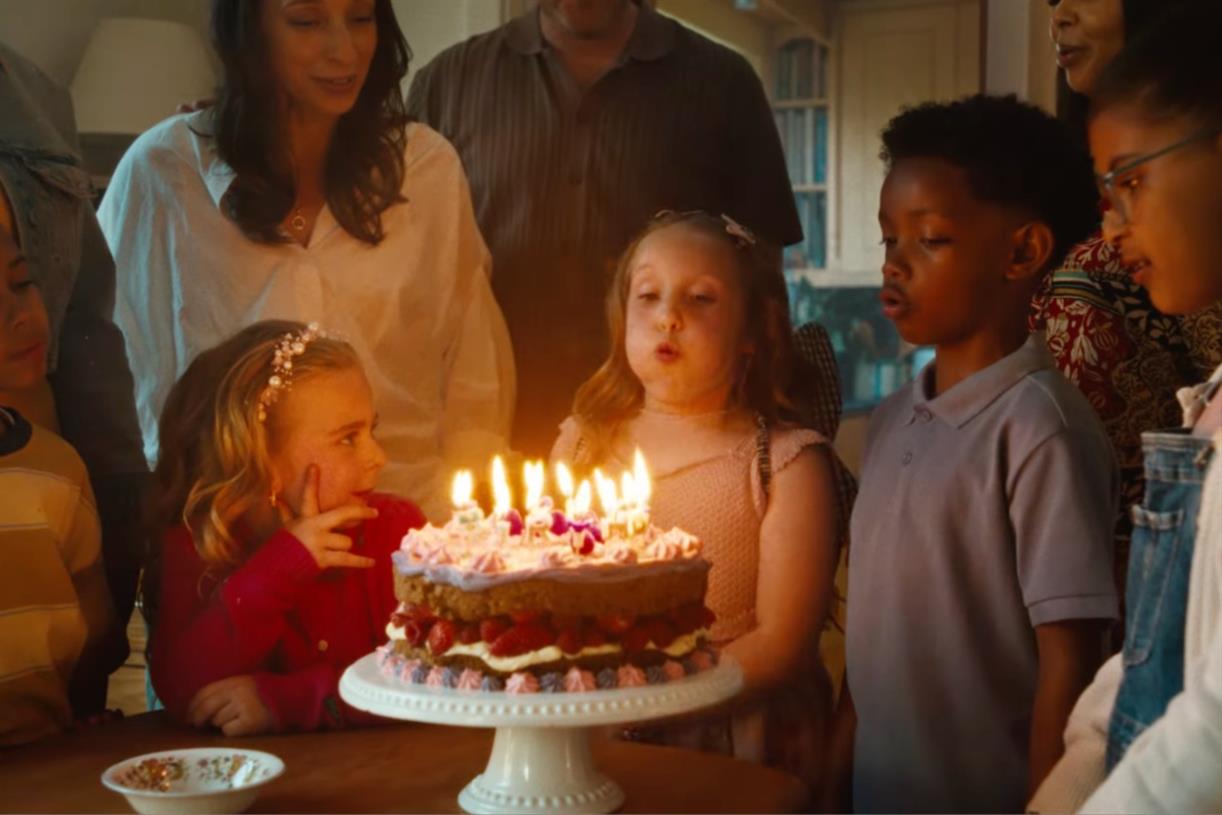Eternal Sunshine of the Spotless Phone
A Lisbon-based writer on the artificial nature of digital memories The post Eternal Sunshine of the Spotless Phone appeared first on Tricycle: The Buddhist Review.

I’ve been having existential angst lately when looking at my Photos app.
Likely, you are already familiar with the app, but just in case you aren’t, when you open it up, your most recent photos are arranged in a grid, like a zoomed-in Chuck Close painting. Above the most recent photos is another row of options arranged into albums—Best of October 2017, Trip to Portugal, 8 Years Since. These albums, or slideshows, are generated by the app. You’ve probably seen them before, clicked on them, and watched some random weekend from 2015 unfold in front of your eyes to the tune of some utterly middling stock music. Photos even has a name for these unprompted slideshows—Memories.
I recently went through a rough breakup. That’s what got me thinking about these Memories, because the app suggested slideshow after slideshow of me and my ex. It also frequently showed slideshows of another ex. As it turns out, you take a lot of pictures in relationships. And so, inevitably, that’s what the app has to work with. The algorithm had no idea that these pictures would trigger painful feelings, that, instead of entertaining me, the robot inside my pocket was continually poking at my open wounds. Or let’s try another metaphor—the app was like a goofy golden retriever, digging up unwanted things from the backyard and laying them down at my feet, this dog panting with a proud expression on its face like, “Yep, I did it, this is exactly what you wanted, you’re welcome.”
Most of us have experienced this aspect of a breakup—any little thing reminds you of the relationship and thus begins an hour-long flurry of regret, guilt, or lament. Yet, with my phone’s unsolicited Memory aggregation, this process felt entirely out of my control. I was at the whim of my memories—they seemed to be driving the car and swerving all over the place like a drunk driver. I wanted relief from these triggering memories, or at least some control over them. After all, if some memories are pleasurable and others harmful, it’s just a matter of sifting the good from the bad, right? I needed a way to take the wheel back, have power over my mind, and steer my mind’s car toward the good stuff.
While the 3rd-century philosophers of the Yogacara didn’t have iPhones, these Mahayana Buddhist philosophers did have a concept called storehouse consciousness, or alayavijnana in Sanskrit, which heavily influenced Tibetan and Zen Buddhism. Here’s the basic idea:
The storehouse consciousness serves a role not dissimilar to a computer’s shared cache memory. We go about our days using our senses: seeing, hearing, tasting, touching, smelling, and thinking. Think of each of these senses as a computer’s CPUs. The storehouse consciousness stores latent karmic impressions and potentials in much the same way as the shared cache memory retains shared data for quick use by these CPUs. Just as each CPU handles specific tasks independently yet relies on shared cache for essential, overarching data, each of the senses operates within its own domain of perception (sight, sound, taste, touch, smell, and thought) while accessing the storehouse consciousness for foundational, karmically determined information.
This concept exemplifies how individual experiences and perceptions can be distinct while also interconnected, influenced by a deeper repository of past actions and experiences. In this conceptual framework, sensory experiences and deep-seated tendencies intermingle, forming each of our very subjective experiences. While a CPU is not subject to reincarnation (as far as I know), in this example, the internet or the cloud, then, could be seen as akin to the collective karma and interconnected flow of consciousness spanning across lifetimes.
We then use that sixth conscious sense, our thinking mind (Sanskrit, mano vijnana), to make sense of it all. It’s a story—it’s our story. In some cases, the story is positive: I am a good moral person trying to do my best to make a positive impact. Or the story is negative: I’m invisible, I’m ugly, I’m not talented. In this system, memories are extremely consequential. We use our memories, our thinking mind working in relation to the storehouse consciousness, to craft an ego. And these memories form the basis for the future too. All of this thinking, building egos, and guessing about futures puts us out of touch with reality, makes us grasp at things, sets us apart from ourselves, from others, and from the natural world, isolating us in our memories and our perceived but-not-so-accurate stories.
Ajaan Pannavaddho, a 20th-century Forest Tradition monk, talks about the storehouse in his collection of teachings Uncommon Wisdom:
Our minds are constantly referring present moment experiences to the past—our memory of what should be there—and thus overlooking the true nature of what arises here and now. Because we have figured out in advance the nature of what should take place along the path, we want to check the validity of present moment experience by comparing it to a conceptual understanding already formed in our minds.
Memories are our main building blocks when constructing a stable idea of self, but that kind of stability is a lie. Stability is fraudulent in a constantly changing universe, and we don’t even exist as one consistent person. In other words, memories fool us. Memories say, “You’re one thing,” but in reality, we are a bundle of many different things, all in flux, existing not in the past or the future but only in a string of moments. Pannavaddho sums it up: “It’s as though, if we can remember something, it still somehow exists.”
Memories take us away from the raw, magical present moment. Memories make us grasp at things and construct fake stories that cause more grasping. So are memories inherently bad?
In the film Eternal Sunshine of the Spotless Mind, which was released twenty years ago this week, Joel Barish (played by an inimitable Jim Carrey) also experiences a rough breakup. To alleviate his heartache, Barish signs up for a strange medical procedure that promises to remove all memories of his ex from his brain. The doctor promises that by the end of the procedure, he will forget that she ever existed.
I thought about Photos. If I wanted to embrace this idea and be just like Barish, I had some practical options. I went into the preferences on Photos and found a setting called Hide and Show. On this screen, I was presented with a grid of faces—every single person in a photo on my phone.
This screen is weird enough to stare at as it is— all of my precious human connections, including people who died or moved on from my life, all scaled down to one flat surface like a diner menu. And if that wasn’t existentially baffling enough, with one tap, I could ask the app to hide a specific person. If I clicked “Hide,” that person would be removed from my Memories. Poof! They’re gone and won’t show up in slideshows or in search results.
I’m ashamed that I took advantage of this feature—I “hid” my two exes. And I didn’t feel great about it. It was unsettling, like a drunken rampage when you take a pair of scissors and start clipping faces out of old Polaroids. All it took was two taps, but it felt ruthless and not the fun kind of ruthless. But what was the alternative? Having these slideshows pop up every day, pulling me into the emotional vortex of the breakup—guilt, loss, regret, all the heavy hitters? And let that happen for what—the rest of my life?
The term palimpsest describes a manuscript that has been erased and written over again. In her book The Years, French writer Annie Ernaux refers to the “palimpsest sensation” of the “time in which past and present overlap.” Ernaux highlights how memory, media, and language don’t just passively record events but actively generate history and the present. Here I was, generating a timeline in which my thinking mind would not be bombarded with images from the past, aggravating this storehouse consciousness that might have even led to the doomed fates of these relationships to begin with. But while this would save me from certain pangs of lament, it still wouldn’t change the past or the person I am today.
Another author who frequently wrote about memory was the Irish writer John O’Donohue, who died too young, in 2008. O’Donohue was ordained as a Catholic priest in his early 20s but left the priesthood to become a scholar and an essayist on Celtic philosophy. In his book Eternal Echoes, O’Donohue makes the case that it is memory, beset by introspection, that grounds us all:
Memory is the place where our vanished days secretly gather. Memory rescues experience from total disappearance. The kingdom of memory is full of the ruins of presence. It is astonishing how faithful experience actually is; how it never vanishes completely. Experience leaves deep traces in us […] In a culture addicted to the instant, there is a great amnesia. Yet it is only through the act of remembrance […] that we can come to poise, integrity, and courage. Amnesia clogs the inner compass and makes the mind homeless. Amnesia makes the sense of absence intense and haunted. We need to retrieve the activity of remembering, for it is here that we are rooted and gathered.
A product of his Catholic background, O’Donohue argues for remembering as an act of lineage, engaging the thinking mind to remind us of who we are. “Human memory is an inner temple of feeling and sensibility,” he writes.
So what is it, then? Is memory a trap or a temple? Is our thinking mind a distraction or a “compass”? Should I go back into my app and unhide my exes? When Barish signed up for that procedure in Eternal Sunshine, was he intentionally throwing a stick of dynamite into his inner kingdom?
The word intention is key here, and it differs from control. Take my grandmother, for instance: my dad’s mom, Helen, whom we call Nan. At 98, Nan reads a book a week and will entertain you with her laughter and stories for hours—well, until Jeopardy comes on. If you bring her champagne, be prepared for giggling and mischievous humor.
Memories are important to her these days, and all it takes is a slight breeze to send her into a storytelling session—“Did I ever tell you about the trolleys that I rode as a little girl in Brooklyn? Did I ever tell you about how your uncle was a brilliant gymnast?” For her, memory is a way to bring back the people she’s lost—her husband, two sons, and many others. But her recollections don’t bring them back into the stark binary light of the smartphone’s uppercase “M” Memories. She uses the smokey bellows of storytelling.
Is this the kind of memory that O’Donohue wrote about? It’s different from the grasping kind of memory by the thinking mind, the type of memory that sends us into circles of pain. Rereading O’Donohue’s passages, I think he’s writing about a quality of memory in a sacred, eternal space where recollections dance and weave together without being subject to preference. Sights, sounds, and smells come back to us nonlinearly, and we sample their flavors before letting them drift on.
This remembering isn’t “this happened and then that happened and that happened,” it’s not some flat historical account that we desperately grab on to. O’Donohue’s activity is more like listening to good music. It’s subjective, meditative, and mysterious.
Nan’s out-loud remembering isn’t the dangerous kind. Mostly, the memories don’t seem to send her into any circles of grief or regret. Perhaps that’s the gift of distance; time smooths out the wrinkles. But that’s also a credit to her elder mastery—she knows how to waltz with memories and not stick to them. For evidence of Nan’s mastery, just spend a few minutes with her. Despite the frequent recollections, she is palpably in the present. She’s not squatting in 1955, she is very much here.
There isn’t one way to think about memory; it’s a practice that evolves. Between the thinking mind and the inner temple, I can see the past and present overlap and take a little more notice of how I am constructing this paradigm. I can even try to parse out these feelings from the storehouse that colors them. It is this very noticing, this observing, that practice is all about.
When the memories of past relationships come and go, I hope I can smile at them and give them a loving nod as they pass by, as if to say, “Oh, hey, didn’t see you there, how’s it going? Stop by anytime, whatever.” I hope not to stick to them. And by not sticking, maybe that will allow me to appreciate them even more, unafraid of their poison, being present with them like listening to a story from an old friend.
But I’m not quite there yet. Until that day comes, I must admit that I’ll be navigating Photos a little more mindfully.

 FrankLin
FrankLin 































